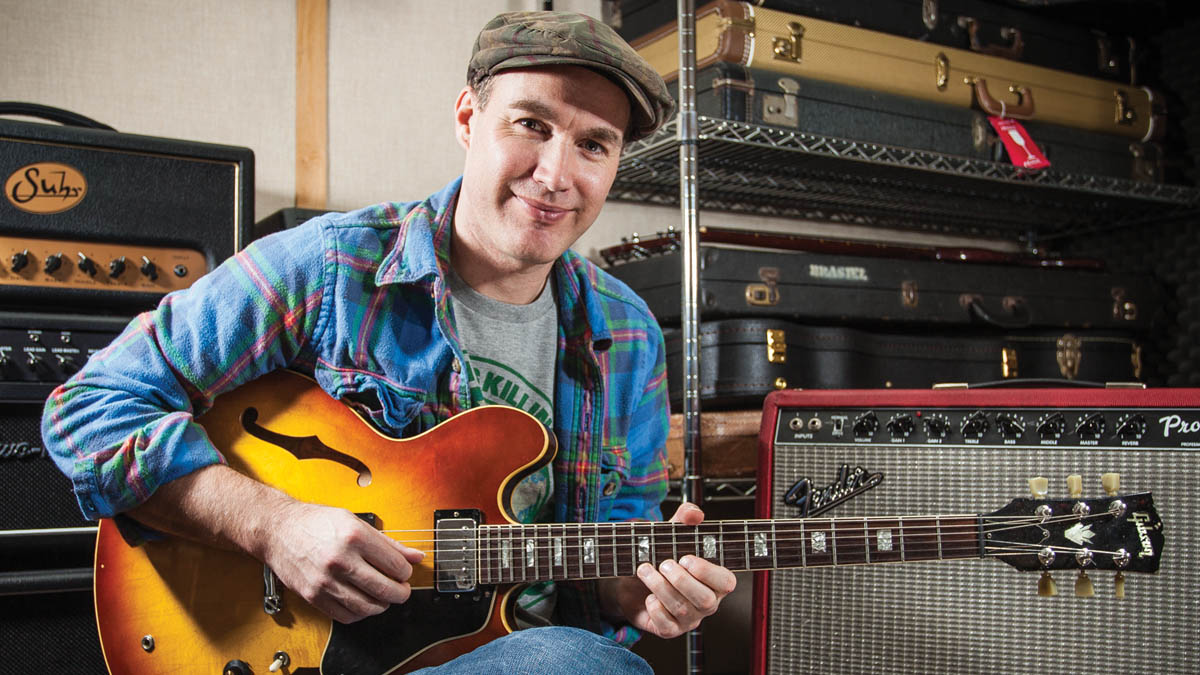How to tell if you’re a beginner, intermediate or advanced guitar player
How many of us know exactly where we're at with the instrument? Renowned six-string educator Justin Sandercoe explains all

People often wonder where they are on their guitar journey. Am I still a beginner? What makes an intermediate player? What are the essential skills for each?
There is no ‘global system’ of merit for the guitar. There are grades you can do that will give an indication for theory, scales and repertoire levels but many are classical based and those that are rock and pop based tend to vary in these aspects. That said, the accredited grade system is best if you’re looking for ‘official’ recognition of ability, not least because countless guitarists globally engage with them.
Having some understanding of this journey can be very helpful, a kind of map that you can reference and understand where paths may be leading if you choose to follow them.
For me, a beginner guitarist is someone who is working on open chords, basic strumming, easy scale patterns (for dexterity and in preparation for later use) and playing appropriate songs. Graduating from beginner would mean you are confident in all those areas and would include playing easy 'campfire' songs with a degree of confidence.
I feel it’s important that beginners follow a structured course that gives them time to develop the essential skills without being overwhelmed. Developing a strong sense of rhythm, continuous movement of the strumming arm and automation of strumming patterns are the key skills – the changing between chords is not usually a problem, no matter how tricky it feels at the start. All this is best achieved by playing songs.
I often meet ‘beginners’ that have been playing for years and are actually very good at simple things. They can play songs, pick up new ones pretty quickly and are confident in what they can do. For many people, this is as far as they want to take it. Though many want to further both their knowledge and skills.
When a student feels ready to move onto intermediate grades, they would start learning barre chords, scale patterns (eventually in all five CAGED patterns), develop an understanding of harmonic structure and sensitivity to the music you play.
Get The Pick Newsletter
All the latest guitar news, interviews, lessons, reviews, deals and more, direct to your inbox!
By the intermediate level most players have already started to know what styles they want to play, and must be ready to make decisions on what they need to learn and how to do it. Growth that comes from having to make decisions is like those teenage years – developing independence while still having a safety net.
The intermediate years can be hard in the age of online lessons – there is so much info available that it can be overwhelming. And it can be hard to sort the wheat from the chaff. Many online teachers make big promises but deliver sketchy lessons. Ask around the guitar community and seek advice if you’re not sure. But beware of anyone promising big results with minimal effort.
To get from intermediate grades a student should be familiar with the chords and major scales in the CAGED system, be very confident with rhythm and improvising with major or blues styles (or both). And they should have a bunch of songs they can play confidently and be good enough to play in a band or jam on songs they know.
A graduating intermediate player should also be refining their style and taste, deciding what to learn and what to ignore, and realising that learning it all is of course impossible.
The advanced grades are for those who want to push their understanding and technical development on the instrument. Usually these students will have an understanding of what they want to accomplish and have had some performing experience, be it live or recording.
Advanced students benefit from in-person lessons or a mentor to help them reach the highest levels. Lessons are often more conceptual than technically specific and one would study a new thing so as to incorporate the ideas into their own style.
I recommend that advanced guitarists focus on mastering one style they love rather than trying to develop a broad range, unless they want to teach or get into pit band or session work.
The amount of students at each grade resembles a pyramid, with beginners at the bottom and advanced students at the top. There will always be a hundred beginners to every one advanced, for many reasons. Some will drop out completely, some will have taken time off while others will feel they've ‘learned enough’ and be happy with where they are.
So that’s how I see it. Take a look on my website to see what a student would need to ‘graduate’ for each grade. At the time of writing, I’ve not been working much on the highest two grades – I’m still focused on helping students build an excellent foundation. Happy practising!
Justin Sandercoe – aka JustinGuitar – is one of the world's foremost guitar tutors. His learning platform, JustinGuitar, was founded in 2003, and its launch on YouTube in 2006 quickly made Justin's lessons some of the most popular on the web. Today, JustinGuitar has over 1.5m subscribers on YouTube, and the website is home to over 1,300 free video guitar lessons. Tommy Emmanuel, Mark Knopfler, Steve Vai and Brian May are among the A-list names who recommend Justin's guitar courses.
"Upgrading from your entry-level acoustic opens the door to an entirely new world of tonewoods, body shapes, and brands": 6 signs it's time to upgrade from your first acoustic guitar
"I'm past my prime": 5 common excuses for not learning the guitar – and 5 body and mind-boosting reasons you should











